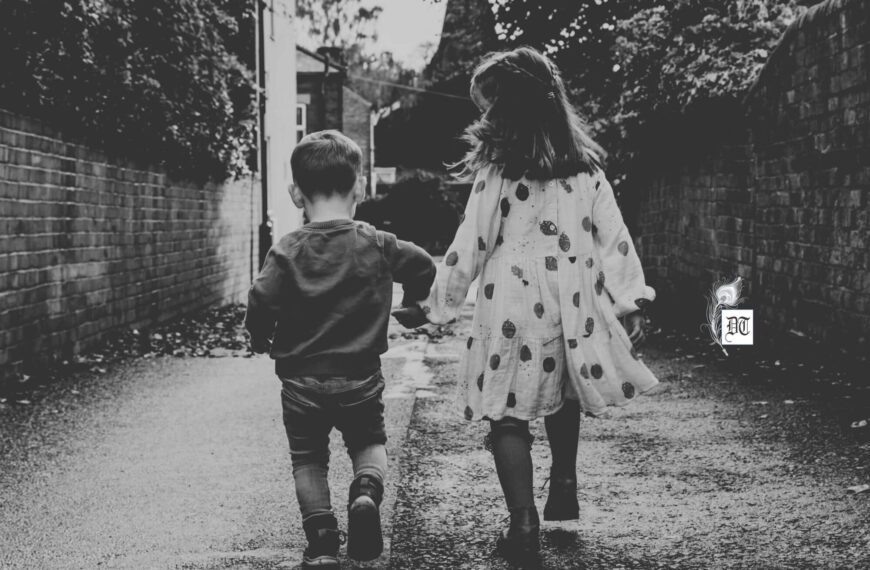Dementia is a condition that describes a set of symptoms that may include memory loss and difficulties with thinking, problem-solving or language. Dementia is caused when the brain is damaged by diseases, such as Alzheimer’s disease or a series of strokes. Dementia is progressive, which means the symptoms will gradually get worse. Rita came in contact with elderly people as part of their Arogya HomeCare program (arogyahomecare.in) over the last few months. In an age, where many elderly people have to fend for themselves as their grown-up children have moved out of the house, city, or country, providing care to those suffering from dementia becomes a huge challenge. Here’s our columnist tells us how to help people with dementia, in the weekly column, exclusively in Different Truths.
In the world of Harry Potter, dementors were Dark creatures who fed upon human happiness, causing depression and despair to anyone near them. While Potter-world dementors may be fictional. There lurks among us a real life dementor which sucks memories, happiness, and joie de vivre from those unfortunate people it afflicts, causing immense pain and suffering to its victims’ family and friends. It is the dementor of this day and age – dementia.
What is Dementia?
Dementia is a condition that describes a set of symptoms that may include memory loss and difficulties with thinking, problem-solving or language. Dementia is caused when the brain is damaged by diseases, such as Alzheimer’s disease or a series of strokes. Dementia is progressive, which means the symptoms will gradually get worse. I have come into contact with a considerable number of elderly people as part of our Arogya HomeCare program (arogyahomecare.in) over the last few months. What surprised me was that a sizeable number of those whose families contacted us were suffering the devastating effects of dementia. In an age, where many elderly people have to fend for themselves as their grown-up children have moved out of the house, city, or country, providing care to those suffering from dementia becomes a huge challenge.
Dealing with Dementia
In India, in the absence of cutting edge technology and trained resource, drugs have been the singular most important way to treat dementia. While drugs are often the easiest route to take, counselling and other non-drug therapies need to be embraced to maximise the individual’s quality of life and communication success, using whichever approach or combination of approaches meets the needs of that individual.
Assistive Technology
Assistive technology refers to devices or systems that support a person to maintain or improve their independence, safety, and wellbeing. It tends to refer to devices and systems that assist people with memory problems or other cognitive difficulties, rather than those that are used to aid someone with mobility or physical difficulties.
Many assistive technology devices are electronic, but the term does not just refer to high-tech devices. However, devices such as smartphones and tablets, coupled with widespread internet coverage, are making technology more accessible for everyone in ways that we couldn’t even imagine just a few years ago. And this progress has changed the nature of assistive technology for people with dementia. Today, technology and apps can support people in carrying out everyday tasks and activities, enhance their safety, support their social participation, and monitor their health.
Cognitive Stimulation Therapy
Cognitive stimulation therapy (CST) focuses on actively stimulating and engaging individuals with dementia by using theme-based activities in an optimal learning environment, typically, in a small-group setting. CST can include words games, puzzles, and tablet or phone-based cognition games and exercises.
Environmental Modifications
Environmental modifications are changes or adaptations to the environment to improve communication skills in individuals with dementia. Modifications are aimed at optimising the cognitive, visual, and auditory aspects of the environment and include improving lighting, reducing glare, minimizing background noise and noise reverberation and incorporate cues or signs everyday life to improve memory, awareness, and orientation.
External Memory Aids
External memory aids are aimed at helping individuals with memory problems in their day-to-day activities. They include electronic and non-electronic devices, as well as environmental adjustments. Examples include personal digital assistants (PDAs), message boards, clocks, and pictures.
Reminiscence Therapy (RT)
Reminiscence Therapy (RT) is an intervention approach that uses the life history and experience of an individual to improve his or her sense of well-being. Reminiscence therapy involves talking about things from the past, using prompts such as photos, familiar objects or music.
Sometimes these approaches are combined using a memory box of favourite possessions or memorabilia. Techniques like this are popular because they draw on early memories, which people with dementia tend to retain best.
There is evidence that life story and reminiscence work, particularly when done one-on- one, can improve mood, wellbeing and some mental abilities such as memory. By talking about who they are, people with dementia can help others focus on them, and not their dementia.
An Integrated Approach
The best way to maximise dementia outcomes includes regular monitoring of patient’s health and cognition, education and support to patients and their families, and initiation of pharmacologic and non-pharmacologic treatments as appropriate. At Arogya HomeCare, we have adopted an integrated approach to care for dementia patients. Through a seamless collaboration among healthcare providers, that includes general physician, neurologist, and psychiatrist/psychologist, we create a customized treatment plan for each individual. We discuss with family members and immediate caregivers, who may be family members or nurses or attendants, to implement the treatment plan that has been prescribed, keeping the family’s logistical, financial, social and other constraints in mind.
©Rita Bhattacharjee
Pic from Net.





 By
By
 By
By
 By
By
 By
By